Scarface: portrait of a tomb robber
flashback --from "International Daily News", Rome, July 17, 1980
While searching my library/archives for background information for a colleague who writes historical fiction, I came across this article of mine, from 1980.
Norchia, Etruscan necropolis, Vetralla- photo John Ferro Sims
Of the many characters who play a part, more or less important, more or less legal, in the world of antiques and collecting, one of the more colorful is Scarface. It may sound like something out of an old James Cagney film but many of those who gravitate around the antiques shops of old Rome have just such nicknames.
Lo Sfregiato, or Scarface, has a visage that fits his name and a life full of experiences and adventures that could have filled several chapters in the book “Pots and Robbers”.
photos of official excavators, scavatori, and tombs of Vulci - “Tombaroli si nasce- biography of a tombarolo”
As a young man he lived in Rome hanging out in the shops and botteghe in the areas of Via dei Coronari and Via Giulia. By osmosis he picked up quite a culture about styles, epochs and the value of antiques.
Many school children living here in Rome know the thrill that makes a field trip complete when at the Etruscan tombs of Cerveteri, at Ostia Antica or an abandoned medieval town they find a piece of pottery or a mosaic tessera thousands of years old. They can understand then the excitement of Scarface’s early years spent among the Etruscan tombs north of Rome. During the night, especially on cold, rainy nights when surveilance was less strict, he and his “colleagues” would enter tombs that had been unviolated for centuries, bringing away earth-encrusted vases and gold objects that would then be sold on the black market in Rome or saved for selected German and Swiss “tourists”.
These tombaroli risked arrest every night and not only did Scarface spend several years in prison but he arrived at 60 years of age filled with rheumatism from the damp working conditions.
A less dangerous activitiy that he later pursued was the unusual one of putting together jigsaw puzzles of ceramic shards. He would buy the contents of an old well or pozzo da butto that had been the garbage dump of an Italian town in the Middle Ages. Even today when visiting a small hilltop town you will notice that along the steep external walls surrounding the town there are zones where rubbish or old building materials are still dumped.
In medieval times when sewers and other methods of eliminating rubbish did not exist most houses had their own wells or pozzi for this use. Here broken household utensils, plates, glassware and other waste were thrown and in times of plague even unbroken dishes from infected houses were thrown in with the hope that also the disease would be eliminated.
Digging up these rubbish piles today is not attractive work but good money may be earned when the fatigue of sifting through the bits and pieces, of matching colors and designs, of making rough restorations has been done.
I often saw Scarface pacing up and down long trestle tables, one with blue and white pieces, one reserved for green bits; he would walk back and forth with several pieces in hand, remembering, testing, trying to put the bits together. Over the years he made a decent living by giving a second life to 15th century pitchers and plates made in Orvieto or Viterbo.
He knew the excitement of finding that last piece of magnesium brown or green maiolica which made a rare Ferrara plate complete again and saw medieval cups, shining like the day they were made, appear in his hands after the hundreds of years of dirt and grime had been washed away.
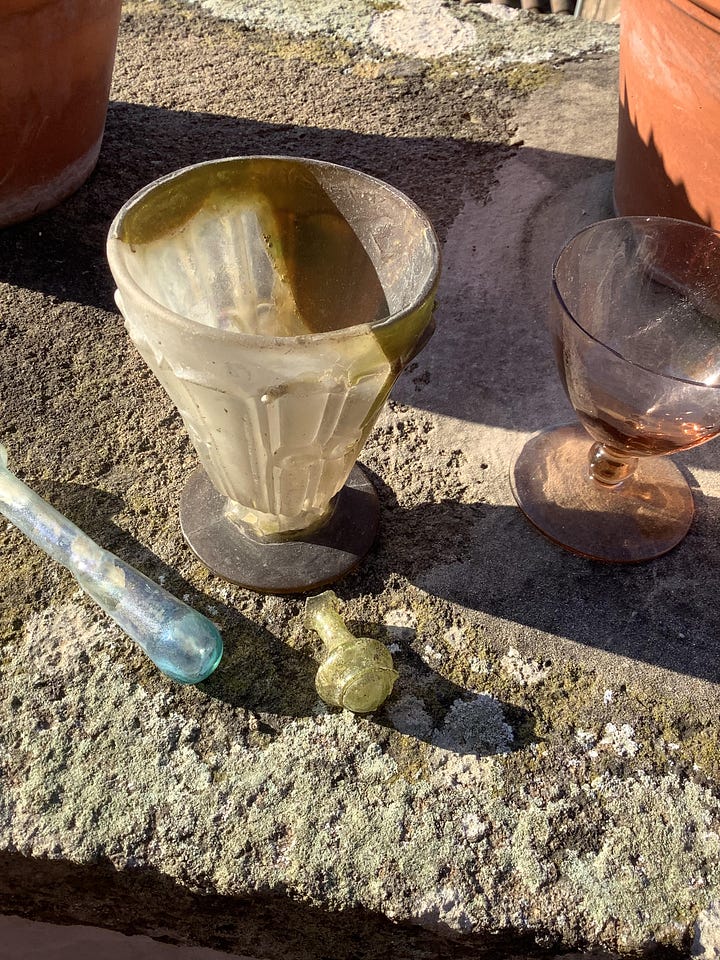
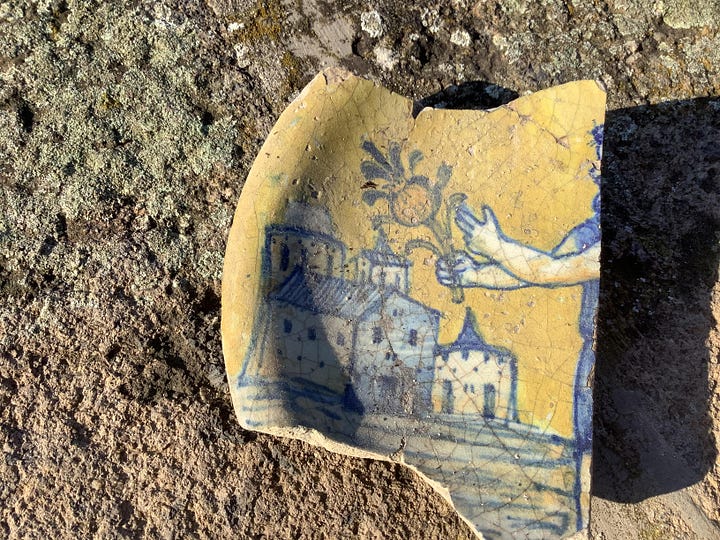
Even with many pieces missing these plates and other maioliche can be sold (no longer true ) to collectors at open air markets and more than one well-known Roman antiquarian has a display of these “once rubbish” pieces in a back room. Some collectors want only pieces with a specific theme: dates, heads, mottos or coats-of-arms.
The last time I saw Scarface, with his usual generosity, he offered me a 19th century crystal glass. We came upon him unexpectedly at a run-down resort where he was living in a caravan/trailer on the lake side. On stormy nights, he said, he had to get up often to check that the lake water had not come up too high or the old trailer may have floated away with him trapped inside.
The trailer was more of a storehouse than a home and from the burlap sacks that stood around he pulled out various objects, looking much like a down-at-the-heels Santa Claus.
One sack contained the stock of a century-old household goods shop: hundreds of odd glasses that had never been sold and had then been forgotten in a cellar. A tall-stemmed bubbly crystal one with a beautiful “ring” was admired and, despite protests on my part, I later found myself taking it home. From another smaller sack a series of bronze Etruscan fibule pins was carefully unwrapped. Where they came from he couldn’t tell us, of course, but there they were, the fruit of a night’s work perhaps by one of a new generation of tomb robbers…. if this species still exists.
Our admiration for these pieces led him to show us an even more valuable treasure. Opening his shirt collar he pulled out a gold chain on which, next to a small cross, dangled an Etruscan amulet in gold known as a bolla. It was similar to those portrayed on Etruscan sarcophaghi in the museums of Tarquinia and Villa Giulia. A protection against evil, a good luck charm: hopefully it is still protecting Scarface wherever he is today.
First discovered by tombaroli, the Sanctuary/Temple of Demetra in Vetralla is now a protected site and the terracotta statue of the goddess and ex votos have been transferred to Viterbo’s Etruscan Museum
Other museums to visit in Viterbo especially for Etruscan objects and ceramics.
A self guided visit to Viterbo ? Download my Voicemap guide to Viterbo.
click the underlined links to learn more


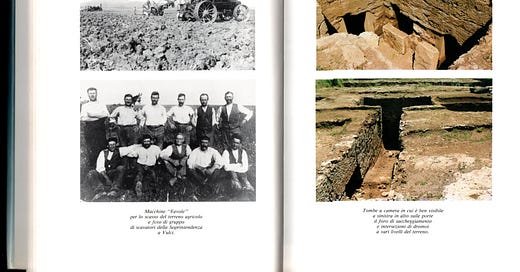




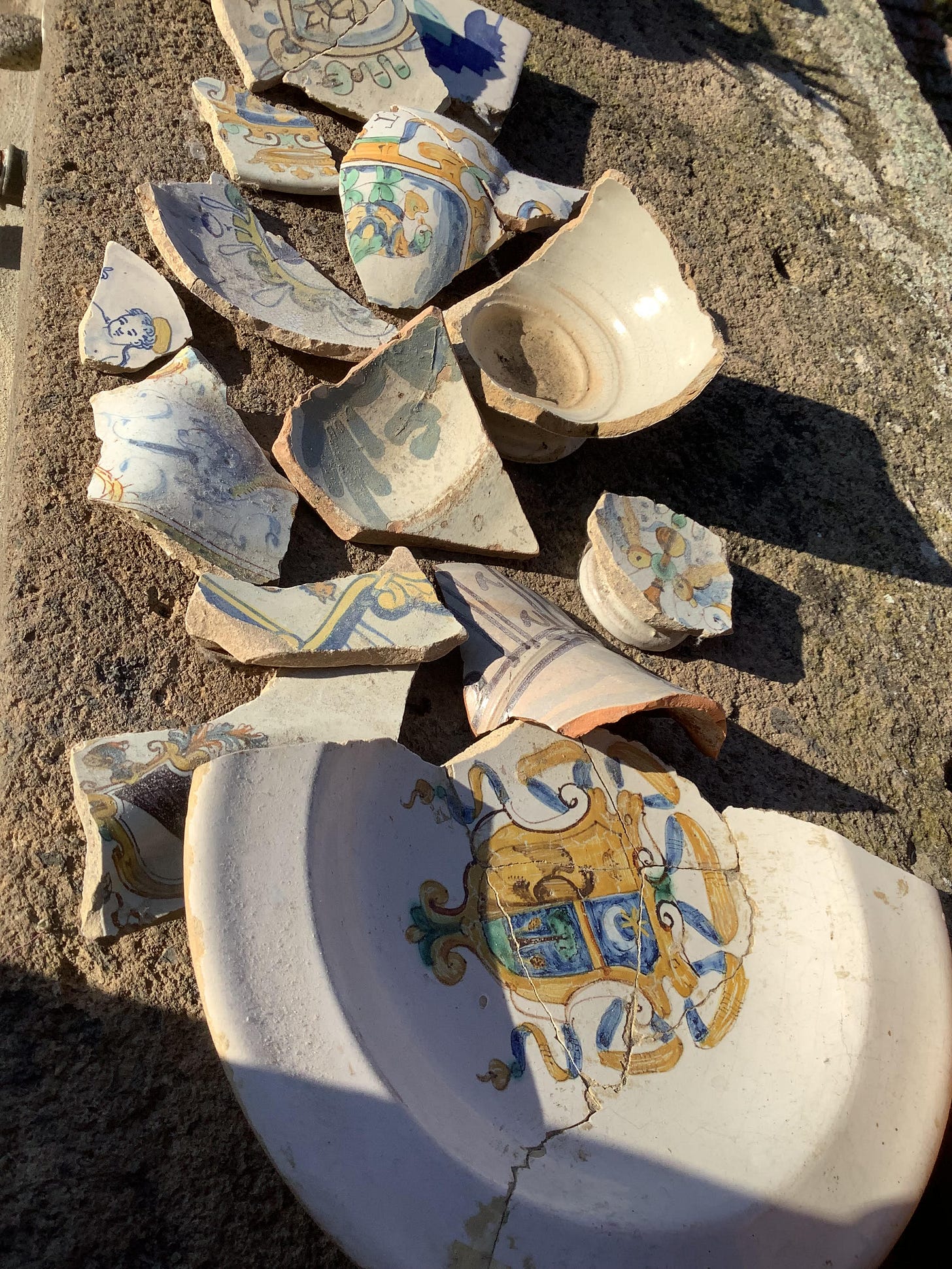
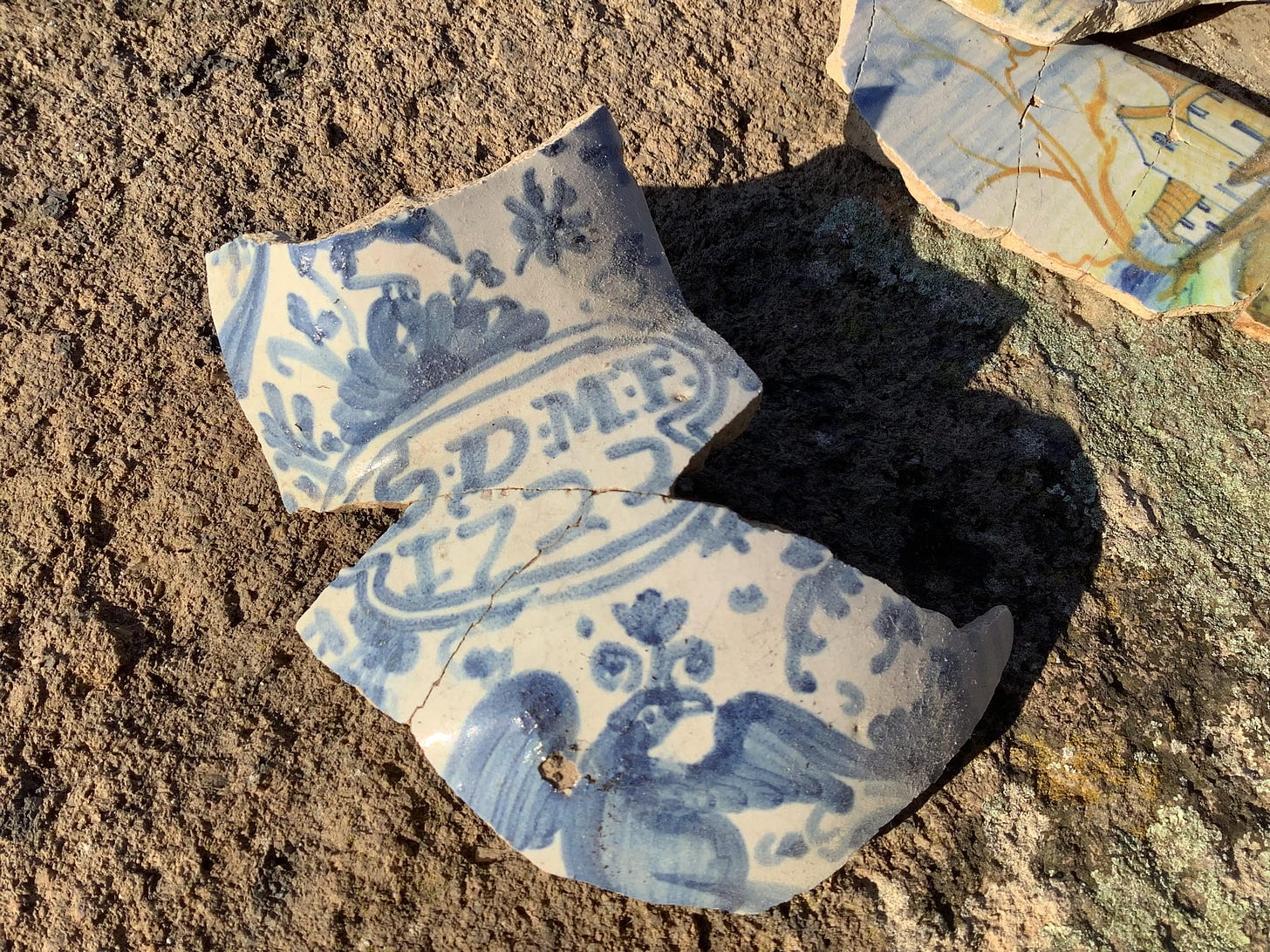

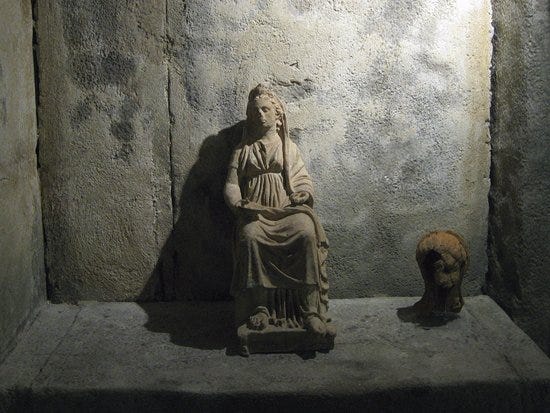
What a story! Love the image of him as a down on his luck Santa...
I would have loved to have met that guy (and bought a few scraps).